“Every child is an artist. The problem is how to remain an artist when we grow up.” – Pablo Picasso
Another post from PVP’s awesome Education Director, Jacie Feinberg.
As we embark upon this month’s all about Famous Artists, this Picasso quote makes me reflect on how our perception of art evolves as we move from childhood to adulthood. I definitely considered myself an artisté as a young child and even had my grandmother teach me how to paint landscapes (a la “Paint Nite” style these days that we see popping up all over the place) when she would come for her yearly visits. Nowadays, I would never consider just sitting down and drawing or painting for myself. You’re more likely to see me singing karaoke or going to a great concert these days! 🙂 Yes, we all have our talents and skills, but how do we maintain our connection to our creative side as adults? I’m a huge fan of Howard Gardner and his theory on multiple intelligences – he has a great quote: “It’s not how smart you are that matters, what really counts is HOW you are smart.” But even though you may be stronger in your Linguistic Intelligence over your Visual/Spatial Intelligence, you can still find your inner child again with your OWN children by encouraging them to experience open ended art.
There is a huge difference between process oriented (a.k.a. open ended) art and product oriented art. I’m sure you can easily see the difference here…
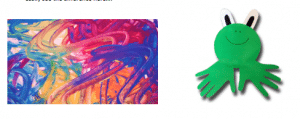
With Process-Oriented Art…
- The children can make it anyway they want without a model in front of them.
- We look at the experience the children will have, and not just the outcome.
- The children are given the supplies and they use their own thinking and problem solving skills to create something uniquely their own.
- What they learn doing the activity is more important than what it look like in the end.
And with Product-Oriented Art…
- Product Oriented Art has an outcome where they will all look like the model.
- The reason behind a product based activity is not to explore the art medium for what it is, but to color a frog green, or to make a ladybug or to learn a different type of skill (i.e. following directions, cutting a line, or for a cognitive outcome).
- The expectation is to do the same thing and all have the same results while following the directions of the adult.
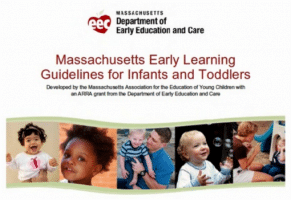 Both of these art creations have a different goal. Here at Pine Village we strive to give the children as many process-oriented art activities as we can on a daily basis. You will sometimes see a product oriented activity in your child’s portfolio – but if you look at the actual Learning Guideline as to what the goal was, then you will see that the intention behind it may be completely different from The Visual Arts category. The goal of course is to give the children as many rich experiences as possible while immersed in español!
Both of these art creations have a different goal. Here at Pine Village we strive to give the children as many process-oriented art activities as we can on a daily basis. You will sometimes see a product oriented activity in your child’s portfolio – but if you look at the actual Learning Guideline as to what the goal was, then you will see that the intention behind it may be completely different from The Visual Arts category. The goal of course is to give the children as many rich experiences as possible while immersed in español!
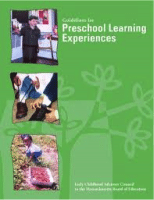 Last year I designed an open-ended art workshop for parents in the South End and we had a fabulous time engaging in hands on art activities that would be fun to do at home as well!! As I was putting my presentation together, I looked at the curricular goals from the Department of Early Education and Care (EEC) for Visual Arts and all of the action words are “EXPLORES” “EXPERIMENTS”, “CREATES” for both toddlers and preschoolers. It really is a testament to what we value here as early childhood educators to giving the children an opportunity to explore, experiment and create.
Last year I designed an open-ended art workshop for parents in the South End and we had a fabulous time engaging in hands on art activities that would be fun to do at home as well!! As I was putting my presentation together, I looked at the curricular goals from the Department of Early Education and Care (EEC) for Visual Arts and all of the action words are “EXPLORES” “EXPERIMENTS”, “CREATES” for both toddlers and preschoolers. It really is a testament to what we value here as early childhood educators to giving the children an opportunity to explore, experiment and create.
HOW TO TALK TO CHILDREN ABOUT ART:
- Resist the urge to say, “What is it?” Instead say, “Tell me about it” or, “You must be so proud of yourself!”
- Give meaningful feedback instead of just saying how “beautiful” the art is or freely complimenting them.
- Talk about texture, color, shape and the experience: BE SPECIFIC
- “I see circles in your picture”
- “You filled up the whole paper”
- “Do you have a story you would like to tell me about your picture?”
- “You used red, yellow and blue in your picture”
Something fun to try at home!
Here’s an open ended art activity that you can try at home that is a self-portrait inspired by famous artist, Frida Kahlo!
MIRROR PAINTING:
When thinking of painting, we more often than not think of putting paint on a paintbrush and using construction paper. Well here is a creative idea to encourage your budding artists to have fun on a different painting surface!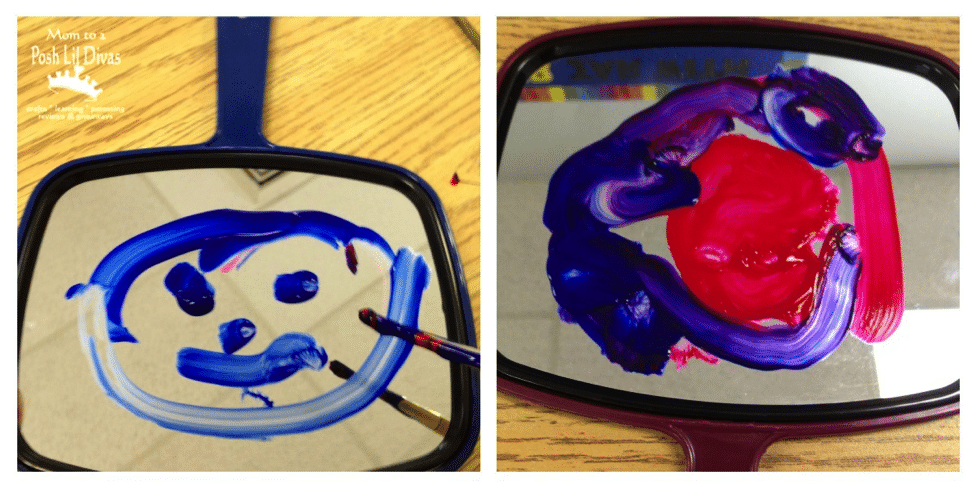
Put out fingerpaint and a mirror (I’ve used hand mirrors from the Dollar store – but you can also do over the door mirrors and lay them flat on the table) and let the children create, explore and experiment with the texture of the paint! If they want to draw a self-portrait and be done, then that’s okay. If they want to mix all of the colors together, then that’s okay too! If they would like to save their art when they are done with the mirror painting, encourage them to do prints by laying some paper gently on top! The most important tip though is to HAVE FUN!
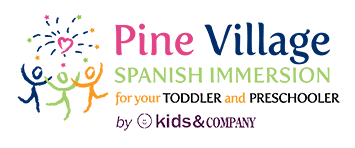

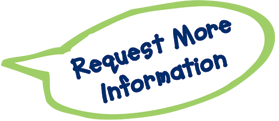
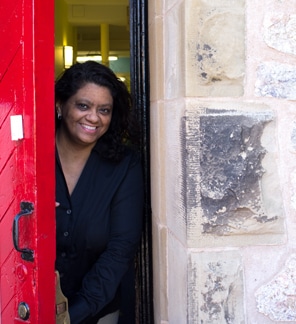
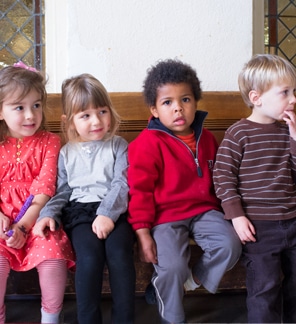
I love the open ended art process! This aspect is something that Pine VIllage stands out in. I visit many preschools as a yoga specialist and see the product oriented art all over the walls. Every one looks the same. Although there are curricular goals attained, I believe in the open ended side for supporting a child’s inner imagination and creative spirit. (and often math and science can be learned by the latter approach, naturally!!!) Similarly, when I ask toddlers and preschoolers to create a yoga pose, I try to pose questions to hear their dialogue about the pose rather than “What is that?” which can feel entrapping. I am a big fan of this article. Way to go Jacie and Pine Village
Thank you, Lara!